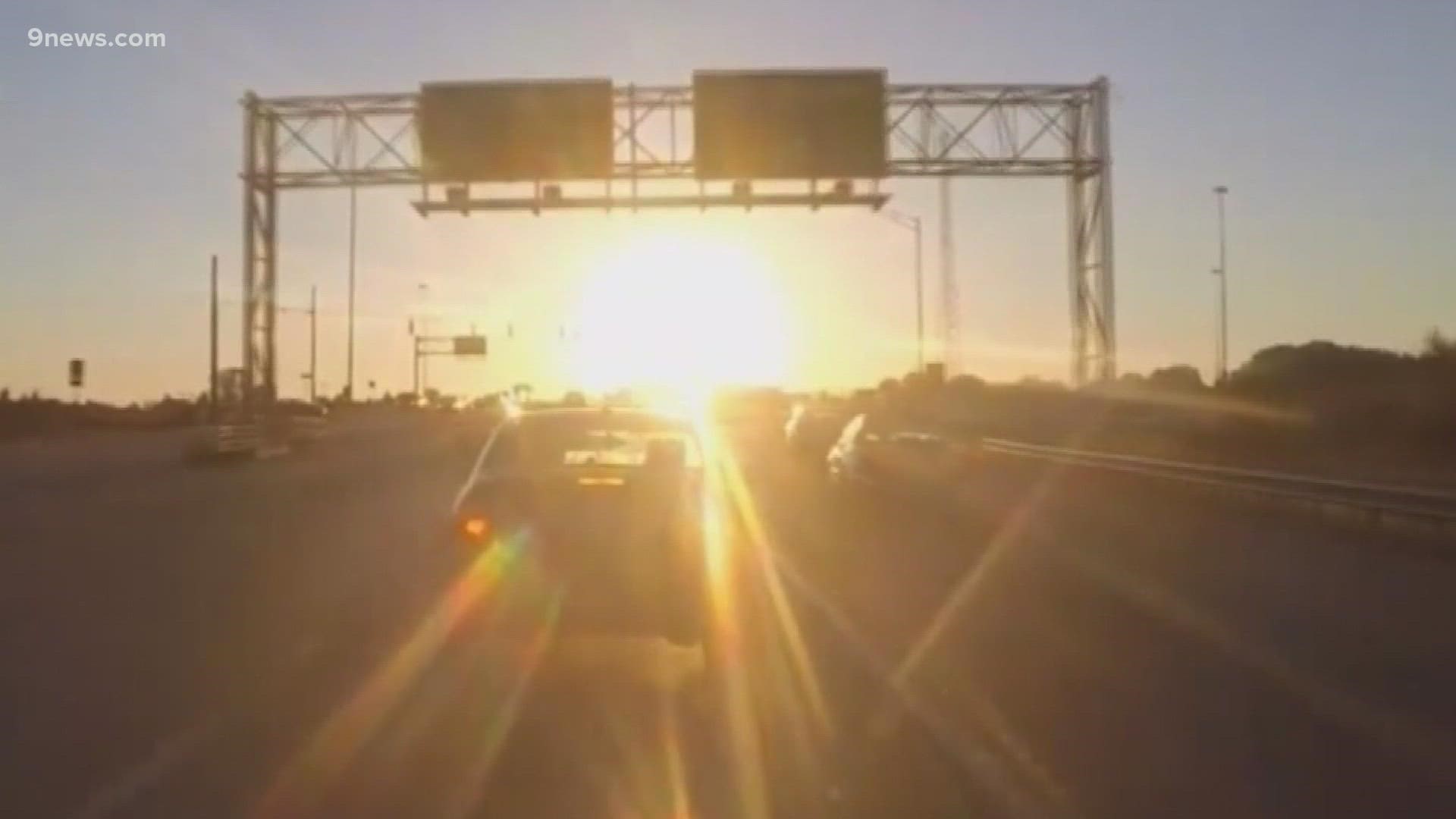IDAHO SPRINGS, Colo. — Extreme sunshine is a very Colorado problem, especially when it comes to I-70 at Floyd Hill.
Monday morning was the fifth time the eastbound lanes of the interstate had been shut down in the first eight days of November – all due to sun glare.
It’s just the beginning of sun glare season, which runs from November all the way into February.
On the fall equinox, the sun rises well to the north, which would be to the left of the slightly southeast-facing interstate at Floyd Hill. There is some glare at that time, but it gets more extreme by about Halloween.
Because of the Earth's tilt, the sunrise moves a little bit to the right each day. By Nov. 1, the sunrise is very close to the highway.
The steep incline of the I-70 mountain corridor accentuates the glare, making it impossible to get a clear view of the road.
On the winter solstice, the sunrise is as far south as it will go, which is still in extreme sun glare position. And that’s when it makes its way back to the north across the view of I-70 again.
That means sun glare closures are possible into the first few weeks of February.
The extreme sun glare usually hits Floyd Hill shortly after sunrise and lasts for about 45 minutes.
Interestingly, it’s just a coincidence that sun glare season generally hits after switching the clocks back to standard time. If Colorado were to make Daylight Saving Time permanent, sun glare season would be the same months, but it could lessen the impact to the morning commute, with the bulk of the impacts after 8 a.m.
SUGGESTED VIDEOS: Science & Weather

